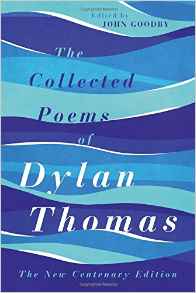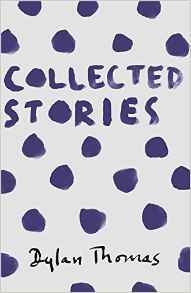During Dylan’s teenage years, as well as completing notebooks jam-packed full of poems, he also made contributions to magazines and newspapers, in particular the Swansea Grammar School magazine.
Click the picture to visit the National Library of Wales online exhibition.
juvenilia
Please click on the below + symbols to reveal more information on each subject.
- When was it written: C.1927
When and where it was first published: Poet in the Making (1968) - Where you can find it now: Dylan Thomas: The Notebook Poems 1930-1934, edited by Ralph Maud (1989). Currently out of print.
- Excerpt:
‘I’ll buy some powder! ram it down!’
Said little sonny.
‘Apply a match, blow up the bees
And take their honey’.
- When and where it was first published: Swansea Grammar School magazine (July 1929)
- Where you can find it now: Dylan Thomas: The Notebook Poems 1930-1934, edited by Ralph Maud (1989). Currently out of print.
- Excerpt:
I cannot eat the red, red rose,
I cannot eat the white;
In vain the long laburnum glows,
Vain the camellia’s waxen snows,
The lily’s cream of light.
- When and where it was written: c.1929
When and where it was first published: Poet in the Making (1968) - Where you can find it now: Dylan Thomas: The Notebook Poems 1930-1934, edited by Ralph Maud (1989). Currently out of print.
- Excerpt:
They say that the light of her eyes is gone,
That her voice is low, and her cheek is wan,
That her looks are sad, and strange, and wild,
Yet meek as the looks of a sinless child.
- When and where it was first written: c.1929
When and where it was first published: The Poems Edited by Daniel Jones (1971) - Where you can find it now: The Collected Poems of Dylan Thomas, A New Centenary Edition, edited by John Goodby (2014) and Dylan Thomas: The Notebook Poems 1930-1934, edited by Ralph Maud (1989). Currently out of print.
- Excerpt:
Frivolous is my hate,
Singed with bestial remorse
Of unfulfilment of desired force,
And lust of tearing late. - Further information: This poem is mentioned in Dylan’s short story, The Fight.
- When and where it was first written: c.1929
When and where it was first published: The Poems Edited by Daniel Jones (1971) - Where you can find it now: The Collected Poems of Dylan Thomas, A New Centenary Edition, edited by John Goodby (2014) and Dylan Thomas: The Notebook Poems 1930-1934, edited by Ralph Maud (1989). Currently out of print.
- Excerpt:
Like suns red from running tears,
Five suns in the glass,
Together, separate yet, yet separately round,
Red perhaps, but the glass is a pale as grass,
Glide, without sound. - Further information: This poem is mentioned in Dylan’s short story, The Fight.
- When and where it was first written: c.1929
When and where it was first published: The Poems Edited by Daniel Jones (1971) - Where you can find it now: The Collected Poems of Dylan Thomas, A New Centenary Edition, edited by John Goodby (2014) and Dylan Thomas: The Notebook Poems 1930-1934, edited by Ralph Maud (1989). Currently out of print.
- Excerpt:
The frost has lain,
Frost that is dark with flowered slain,
Fragilely strewn
With patches of illuminated moon,
About my lonely has in flagged unlovely red. - Further information: This poem is mentioned in Dylan’s short story, The Fight.
- When and where it written: c.1930
- Where you can find it now: Dylan Thomas: The Notebook Poems 1930-1934, edited by Ralph Maud (1989). Currently out of print.
- Excerpt: The moon is your lady; she sings you to sleep; the stars arethe dew on her hair.
- Further information: This is in Dylan’s handwriting can be found at the Harry Ransom Research Centre in Austin, Texas.
- When and where it was first published: Swansea Grammar School magazine (April 1930)
- Where you can find it now: Dylan Thomas: The Notebook Poems 1930-1934, edited by Ralph Maud (1989). Currently out of print.
- Excerpt:
Come, sing me a song of the succulent spring,
Oh the balmy and beautiful season,
Come, chirp me a chant of the peewit on wing,
Or any fair fowl within reason.
Yes, lisp me a lyric of lilies and languor,
Of maids from Kidwelly and lasses from Bangor.
- When and where it was first published: Swansea Grammar School magazine (April 1930)
- Where you can find it now: Dylan Thomas: The Notebook Poems 1930-1934, edited by Ralph Maud (1989). Currently out of print.
- Excerpt:
There was a pearl-pale moon that slid
Down oceans of ambrosial sky,
Under the drooping of the day’s dusk-lid
Where darkness and her wine-waves lie
And at the full nocturnal hour
She twined her splendid, curving hair,
And bent her body like a flower.
- When and where it was first published: Swansea Grammar School magazine (July 1930)
- Where you can find it now: Dylan Thomas: The Notebook Poems 1930-1934, edited by Ralph Maud (1989) under its original title ‘The Shepherd blew upon his reed'(June 1930). Currently out of print.
- Excerpt:
The shepherd blew upon his reed
A strange fragility of notes,
And all the birds and forests freed
The music of their golden throats. - Further information: This poem was deleted from notebook 1 , however originally it was poem ’12’ under the title ‘The Shepherd below upon his reed’.
- When and where it was first published: Swansea Grammar School magazine (July 1930)
- Where you can find it now: Dylan Thomas: The Complete Screenplays, edited by John Ackerman (1995). Currently out of print.
- Excerpt: The evolution of the motion-picture from the crude experimentalism of pre-war years to the polished artistry of today has taken place during a very short period. It was not until the beginning of the twentieth century that it was possible to present natural things in natural motion on a screen. Today, less than thirty years later, every shade of physical emotion, however slight or subtle, can be shown among natural and often naturally coloured surroundings.
- Further information: Dylan loved to visit the cinema and had a lifelong passion for film.
- When was it written: c.1931
- Where you can find it now: Dylan Thomas: The Notebook Poems 1930-1934, edited by Ralph Maud (1989). Currently out of print.
- Excerpt:
You hold the ilex by its stem
And touch its petals one by one;
You make them glad and tender them
With lifted fingers to the sun.
Click here to go to Collected Stories for more details.
- When and where it was written: Swansea Grammar School magazine (April 1931)
- Where you can find it now: The Collected Stories of Dylan Thomas, edited by Walford Davies and published by Orion.
- When was it written: April 1931
- Where you can find it now: Dylan Thomas: The Notebook Poems 1930-1934, edited by Ralph Maud (1989). Currently out of print.
- Excerpt:
Calling temerity to see,
Do, like my friends,
Your bidding not by look or touch-
Under, the will
That makes them win. - Further information: This poem became poem XLVIII in the notebook 2, Server From What I Trust.
- When was it first published: Swansea Grammar school magazine (July 1931)
- Where you can find it now: Dylan Thomas: The Notebook Poems 1930-1934, edited by Ralph Maud (1989). Currently out of print.
- Excerpt:
The clear-eyed, callous stars look down
On darkened field and lighted town,
Slow moving through unmeasured space,
Or set in their appointed place. - Further information: The has similar imagery to Dylan’s unfinished poem, ‘In Country Heaven’.
- When was it first published: Swansea Grammar school magazine (July 1931)
- Where you can find it now: Dylan Thomas: The Notebook Poems 1930-1934, edited by Ralph Maud (1989). Currently out of print.
- Excerpt:
The sentimental sonnet:
I shall not come again, nor ever call
The swan upon the waveless lake to me,
To see it sail, with no wing’s sound at all,
Along the waters of the mimic sea.
- When was it first published: Swansea Grammar school magazine (July 1931)
- Where you can find it now: Dylan Thomas: The Notebook Poems 1930-1934, edited by Ralph Maud (1989). Currently out of print.
- Excerpt:
They come with their soft white hair
In a power of candid motion;
Silver birds and flowers are there
In their depths of the deep olive-ocean. - Further information: Part of Two Decorations became notebook 2, poem XIX. This is thought to have been written with his friend Daniel Jones.
- When was it first published: Herald of Wales (April 1932)
- Further information: When published in the Hearld of Wales, this poem was titled, ‘Youth Calls to Age’.
Click here to go to Collected Stories for more details.
- When and where it was written: Swansea Grammar School magazine (December 1933)
- Where you can find it now: The Collected Stories of Dylan Thomas, edited by Walford Davies and published by Orion.
- When was it written: 21 December 1933
When was it first published: The Poems Edited by Daniel Jones (1971) - Where you can find it now: The Collected Poems of Dylan Thomas, A New Centenary Edition, edited by John Goodby (2014) and published by Orion.
- Further information: This poem was sent as part of a letter to Pamela Hansford Johnson (21.12.1933).
Click here to go to Collected Stories for more details.
- When and where it was written: Swansea Grammar School magazine (July 1934)
- Where you can find it now: The Collected Stories of Dylan Thomas, edited by Walford Davies and published by Orion.
Click here to go to Collected Stories for more details.
- When and where it was written: 8 August 1934 in the ‘Red Notebook’.
- Where you can find it now: The Collected Stories of Dylan Thomas, edited by Walford Davies and published by Orion.



